Q
how much is xiaomi su7
Xiaomi's first electric vehicle, the SU7, currently starts at around 215,900 RMB (approximately 142,000 MYR) in the Chinese market. The exact price can vary depending on configurations and optional extras, but the model hasn't officially launched in Malaysia yet, so local pricing will have to wait for an official announcement. For Malaysian consumers, if it does arrive here in the future, the price will likely be adjusted to account for import duties, shipping costs, and local certification fees.
Positioned as a mid-to-high-end electric sedan, the SU7 comes packed with Xiaomi's advanced HyperOS in-car system and a dual-motor, all-wheel-drive setup. It boasts a range of up to 800 kilometers under the CLTC standard, and with its design and tech, it's clearly aiming to go head-to-head with popular models like the Tesla Model 3.
Malaysia's EV market has been heating up in recent years, with the government also pushing electrification through tax exemption policies. However, charging infrastructure and battery range remain top concerns for local users. If the SU7 does make its way to Malaysia, its value-for-money proposition and smart features could be strong selling points, though its real-world performance will need to be tested under local road conditions and climate.
If you're keen, your best bet is to keep an eye on Xiaomi's official updates or check in with local dealerships for the latest developments.
Special Disclaimer: This content is published by users and does not represent the views or position of PCauto.
Related Q&A
Q
What is the safety rating of Xiaomi SU7?
As the first pure - electric sedan from Xiaomi, the safety performance of the Xiaomi SU7 has drawn a great deal of attention. Although the full official safety ratings (such as Euro NCAP or C - NCAP) haven't been released yet, according to the publicly available technical specifications, this model is equipped with a number of active safety technologies, including adaptive cruise control, lane - keeping assist, and automatic emergency braking. Meanwhile, the vehicle body uses high - strength steel and has a battery protection design to enhance passive safety.
For Malaysian consumers, special attention should be paid to the battery thermal management system and local climate adaptability when it comes to electric vehicle safety. The SU7's IP67 waterproof and dust - proof rating and multiple battery safety monitoring systems can handle the hot and rainy environment.
If you want to learn more about the vehicle's safety, it is recommended to refer to the test results from authoritative institutions that will be released in the future. At the same time, comparing the ratings of comparable models like the Tesla Model 3 or the BYD Han can help you make a more comprehensive evaluation when purchasing a car.
With the growing demand for electric vehicles in the Malaysian market, it is advisable for consumers to have a test drive in person before buying and consult local dealers for specific information about the charging network and after - sales service.
Q
Why is the Xiaomi SU7 so popular?
The reason why the Xiaomi SU7 has received extensive attention in Malaysia is mainly due to its excellent cost - performance ratio and innovative intelligent technology configuration. As Xiaomi's first electric vehicle, the SU7 combines the advantages of high performance and intelligence. For example, it is equipped with an advanced autonomous driving assistance system and has a long - range battery life, meeting the dual needs of modern consumers for technology and environmental protection.
In addition, the high reputation that the Xiaomi brand has built up in the electronics field has also brought additional trust to its automotive products, making consumers full of expectations for its quality. In the Malaysian market, electric vehicles are gradually becoming a trend. The launch of the SU7 exactly meets the local consumers' pursuit of green travel and intelligent experiences. Coupled with Xiaomi's proficient marketing strategies, its popularity has been further amplified.
It is worth mentioning that the Malaysian government has been actively promoting the popularization of electric vehicles in recent years, including offering tax incentives and building charging facilities, which has also created a favorable environment for the popularity of electric vehicle models like the SU7. If you are interested in electric vehicles, you can pay more attention to the development of the local charging network and the battery life performance of different brands to make a more suitable choice for yourself.
Q
What type of plug is Xiaomi SU7?
As a pure electric vehicle, the Xiaomi SU7 is equipped with charging plugs that comply with the Chinese national standard (GB/T). Specifically, it supports two charging methods: GB/T DC fast charging and AC slow charging. This means that when using the vehicle in Malaysia, an adapter or a conversion plug may be required. In Malaysia, the Type 2 (Mennekes) standard is commonly used as the AC charging interface, while CCS2 is widely adopted for DC fast charging.
For Malaysian users considering purchasing or using the Xiaomi SU7, it is advisable to understand the compatibility of local charging piles. Some public charging stations may support multi - standard plugs, or charging can be achieved through adapters. Additionally, there are differences in electric vehicle charging standards across different regions. For example, CCS2 is predominantly used in Europe, while GB/T is the main standard in China. Such differences need to be paid special attention to when using the vehicle across countries. A suitable charging solution should be selected to ensure efficient energy replenishment for the vehicle.
With the global development of electric vehicles, the charging standards may be further unified in the future. However, currently, vehicle owners still need to keep an eye on the compatibility of local infrastructure.
Q
How long does it take to make a Xiaomi SU7?
As the first pure - electric vehicle from Xiaomi, the production cycle of the Xiaomi SU7 is generally similar to that of most new - energy vehicles. It usually takes about 4 to 8 weeks from order confirmation to delivery. The specific duration may vary depending on configuration choices, production capacity arrangements, and supply - chain conditions. For consumers in Malaysia, processes such as vehicle import customs clearance and local certification need to be considered, which may add an additional 2 to 4 weeks of waiting time.
It's worth noting that the production efficiency of new - energy vehicles has significantly improved in recent years, thanks to highly automated production lines and modular design. For example, the CTB (Cell - to - Body) technology adopted by the Xiaomi SU7 not only optimizes the production process but also enhances the vehicle's structural strength and range performance.
If you're ordering the SU7 in Malaysia, it's recommended to check the latest delivery schedule through official channels. Also, keep an eye on local new - energy vehicle policies, such as import tariff exemptions or the progress of charging infrastructure construction, as these may influence your car - buying decision and usage experience.
Q
What is the range of Xiaomi SU7 in real life?
The actual driving range of the Xiaomi SU7 is affected by various factors such as driving habits, road conditions, and ambient temperature. Under normal temperature conditions, the high - speed driving range of the four - wheel drive version of the vehicle stabilizes between 300 - 350 kilometers, and the range achievement rate under the CLTC driving cycle is about 75%. When there is continuous high - intensity output, the driving range may be reduced to about 60% of the nominal value. In winter's low - temperature environment, especially when the temperature is below zero, the driving range will decrease by 20 - 25%.
As for the standard version, when driving smoothly in the urban area on a daily basis with the air - conditioner and music on, the range achievement rate can reach about 85%, and the actual driving range can reach 595 kilometers. When driving on the highway at a constant speed of 110 km/h with the air - conditioner on and cruise control enabled throughout the journey, the actually measured driving range can reach 490 kilometers.
The Max version equipped with a 101 - kWh ternary lithium battery can actually run 559 kilometers under the conditions of high - speed driving, heavy rain, and the air - conditioner running at full capacity, with a range achievement rate as high as 97%.
Q
Is the Xiaomi SU7 fully electric?
Yes, the Xiaomi SU7 is a pure electric vehicle that runs entirely on batteries and doesn't rely on traditional fuel engines. It's also Xiaomi's first foray into the electric vehicle market. For consumers in Malaysia, pure electric vehicles are gradually becoming a popular choice, especially with the government's push for green transportation and tax incentives. Models like the SU7 are likely to draw more attention.
It is equipped with advanced battery technology, offering a long driving range and supporting fast charging, making it suitable for both daily commutes and long - distance drives. Additionally, the maintenance cost of electric vehicles is usually lower than that of fuel vehicles, as there's no need to replace consumables like engine oil and spark plugs.
If you're thinking about buying an electric vehicle, apart from considering the driving range and charging facilities, you can also focus on the vehicle's intelligent technological features. For example, the SU7 may come with autonomous driving assistance functions and in - car connectivity systems, which can enhance the driving experience.
Of course, the charging infrastructure in Malaysia is still under development. It's recommended to check the distribution of charging stations near your residence in advance to ensure convenient use.
Q
What is the wait time for Xiaomi SU7?
Currently, the delivery waiting time for the Xiaomi SU7 in the Chinese market is approximately 4 to 6 months. The specific duration depends on the configuration selected and the order volume. However, this model has not been officially launched in Malaysia yet, so local consumers can't place orders for it for now. If it enters the Malaysian market in the future, the waiting time may be affected by factors such as the local supply chain, certification process, and distribution channels. It is recommended to follow the official announcements of Xiaomi Auto or the information from local authorized dealers to get the latest updates.
For Malaysian consumers, while waiting for new energy vehicles, they can first learn about the layout of local charging facilities and government subsidy policies. For example, the current tariff rates imposed on imported electric vehicles and the installation specifications of charging piles in Malaysia. This information will help in planning future car - buying decisions.
It's worth mentioning that the Malaysian government plans to increase the proportion of electric vehicles to 15% by 2030. More new energy vehicles from international brands may be introduced in the future, and consumers can comprehensively compare the cost - effectiveness and after - sales service networks of different models.
Q
What is the price of the Xiaomi SU7?
As Xiaomi's first pure-electric sedan, the starting price of the Xiaomi SU7 in the Chinese market is currently around RMB 215,900 (approximately RM 142,000). The specific price varies depending on the configuration and regional policies. Regarding the Malaysian market, Xiaomi has not officially announced its plan to enter. However, referring to the localization strategies of other Chinese EV brands like BYD, if the SU7 is introduced in the future, the selling price may be adjusted considering factors such as tariffs, local assembly costs, and subsidies. Malaysian consumers should note that the prices of EVs are usually affected by battery technology (such as lithium iron phosphate or ternary lithium batteries), the cruising range (the standard version of the SU7 has a CLTC cruising range of about 700 kilometers), and intelligent driving functions. If the SU7 is launched in Malaysia, its competitiveness will depend on the development of local charging infrastructure, government tax incentives (such as import tax exemptions or road tax concessions), and a comparison with already launched models like the Tesla Model 3 and BYD Seal. It is recommended to keep an eye on the new energy vehicle policies of the Ministry of International Trade and Industry (MITI) in Malaysia and the official announcements from Xiaomi to obtain accurate information.
Q
How fast is the Xiaomi SU7?
As the first pure - electric vehicle model of Xiaomi Auto, the performance of the Xiaomi SU7 has attracted wide attention. According to official data, the SU7 Max version is equipped with a dual - motor four - wheel drive system, with a maximum power of 673 horsepower. It can accelerate from 0 to 100 km/h in just 2.78 seconds and reach a top speed of 265 km/h. This achievement has placed it in the first echelon of high - performance electric vehicles. For users in Malaysia, such acceleration ability is more than enough to meet the needs of daily driving and even track experiences.
It's worth noting that electric vehicles usually have better acceleration performance than fuel - powered vehicles in the same class because electric motors can output maximum torque instantly. However, the actual range will be affected by the driving style. It is recommended to pay attention to the power consumption during aggressive driving. In addition, the hot climate in Malaysia poses higher requirements for battery thermal management. The CTB (Cell - to - Body) battery - body integration technology and the efficient cooling system adopted by the SU7 can effectively handle high - temperature environments. It is recommended that interested users visit the authorized showrooms to personally experience its acceleration performance and intelligent features.
Q
How safe is the Xiaomi SU7?
As Xiaomi's first electric vehicle, the safety performance of the Xiaomi SU7 is worthy of attention. This car adopts a high-strength body structure and is equipped with a number of active safety technologies, such as adaptive cruise control, lane-keeping assist, and automatic emergency braking. These functions play a positive role in enhancing driving safety and are especially suitable for the complex urban road conditions in Malaysia and the needs of long-distance driving. In addition, the battery system of the Xiaomi SU7 has passed a number of rigorous tests, including high-temperature, collision, and waterproof tests, to ensure its stability and safety in the tropical climate. For Malaysian consumers, when choosing an electric vehicle, in addition to paying attention to the range and performance, safety is of the utmost importance. It is recommended to refer to the crash test results of local or international authoritative institutions before purchasing a car and understand the vehicle's after-sales service and warranty policy to ensure peace of mind during long-term use. Electric vehicles are gradually becoming popular in Malaysia, and the charging infrastructure is also constantly improving. In the future, there will be more models suitable for the local market to choose from.
Latest Q&A
Q
How much will 2025 Tucson cost?
The exact pricing for the 2025 Tucson hasn’t been announced yet, but based on the current model’s price range and its positioning in the compact SUV segment, we expect a starting price between RM140,000 and RM180,000. Final figures will vary depending on trim levels and optional extras.
The new model is likely to feature upgraded driver-assist tech, including more advanced lane-keeping and adaptive cruise control. Inside, we could see improved materials, a larger infotainment screen, and added convenience features like wireless charging.
With the compact SUV market getting more competitive, brands are packing in better tech while keeping prices sharp. If you’re interested, keep an eye out for official updates or check with local dealers for the latest offers. It’s also worth comparing specs and pricing against rivals to make the right choice.
Q
Will the Hyundai Tucson change in 2025?
Based on current information, the 2025 Hyundai Tucson is expected to receive several updates, likely including subtle exterior styling tweaks, interior upgrades, and enhanced tech features—such as a more advanced infotainment system or driver-assistance technologies. However, official details are still pending.
Hyundai typically refines design language and boosts tech offerings during mid-cycle updates, so the new Tucson may feature sharper lighting signatures or a larger touchscreen while retaining existing powertrain options, including gasoline and hybrid variants.
For buyers prioritizing practicality and technology, the Tucson has always been a solid value proposition in its class, offering spacious interiors and generous standard features that cater well to families. The refreshed model could further strengthen these strengths.
If you're considering a purchase, keep an eye out for official updates later this year to confirm specs and launch timing. It’s also worth cross-shopping rivals in the segment to ensure you’re choosing the right SUV for your needs.
Q
What is the resale value of a 2018 CLA?
**2018 Mercedes-Benz CLA Used Value Guide**
The resale value of a 2018 CLA depends on factors like condition, mileage, specs, and service history, typically ranging between RM100k to RM150k—exact pricing requires an in-person inspection. Thanks to the Mercedes badge and its coupe-like styling, the CLA holds decent demand in the used market, especially low-mileage examples with full maintenance records.
Key factors affecting price:
- Complete service history (dealer stamps preferred)
- Remaining factory warranty
- Exterior color (popular shades like black/white may command slightly more)
- AMG Line or higher trims can add 5-10% over base models
Note: Luxury cars take the biggest depreciation hit in the first 3 years, but the CLA (being an entry-level model) retains value better than most. Before selling, get a professional inspection and organize all receipts—it helps justify your asking price.
For reference, check comparable Audi A3 or BMW 2 Series listings, though the CLA’s frameless doors and brand appeal often give it a slight edge. For the most accurate valuation, review recent transactions on local used car platforms or visit an official Mercedes-Benz Certified Pre-Owned dealer.
Q
How much is a 2018 CLA 250 worth?
Here's a natural-sounding translation from an automotive editor's perspective:
"The 2018 CLA 250 currently holds a market value of around RM150k to RM180k, depending on factors like condition, mileage, specs, and service history. Well-maintained models with low mileage can fetch prices near the top end, while those with visible wear or accident records may drop significantly.
As Mercedes-Benz’s entry-level coupe, the CLA 250 packs a 2.0L turbocharged engine delivering 208hp and 350Nm of torque, paired with a 7-speed dual-clutch transmission. It offers sharp handling and lively performance—ideal for drivers who enjoy a sporty feel.
Inside, you’ll find a refined cabin with standard features like a multimedia system and reversing camera. Higher-spec variants might add extras like a sunroof or premium audio.
If you’re shopping for a used unit, always check maintenance records and get a professional inspection on critical components (engine, gearbox, etc.). For context, cross-shop rivals like the A 250 or BMW 2 Series from the same year to weigh your options thoroughly."
(Note: Adjusted "RM" placement for natural flow and trimmed some redundant phrasing while keeping the technical details and conversational tone.)
Q
What is the maintenance cost for a 2018 CLA?
**Maintenance Costs for the 2018 CLA**
The maintenance costs for a 2018 CLA can vary depending on the vehicle’s condition, mileage, and the services required. A standard service typically includes basic items like an oil and filter change, which may cost between RM 800 to RM 1,500—depending on the type of oil used and whether you go to an authorized dealer or a third-party workshop.
If additional services are needed, such as brake fluid replacement, air filter changes, or tire rotation, the cost could go up to around RM 2,000 to RM 3,000. To keep the car running smoothly, it’s recommended to service the CLA every 10,000 km or 12 months, whichever comes first.
As a luxury model, the CLA’s parts and labor costs may be slightly higher than mainstream brands. However, sticking to regular maintenance helps extend the car’s lifespan and prevents costly repairs down the road. To save on expenses, owners can consider prepaid service packages or reputable independent workshops. Just make sure to keep full service records—it’ll help maintain the car’s resale value.
View MoreRelated News
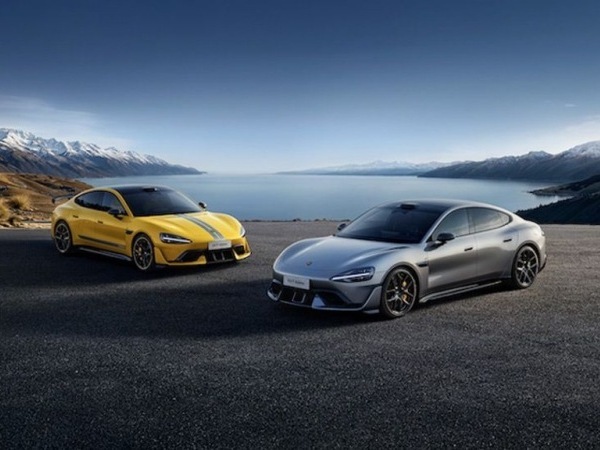
Xiaomi SU7 Ultra priced at RM32,000, plans to sell globally in 2027
Kevin WongMar 5, 2025
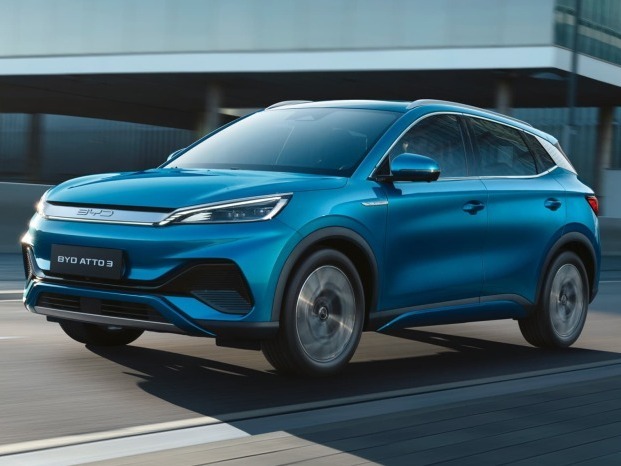
Tesla's sales champion was taken away by BYD, Model 3 and Model Y lost their sales position in multiple regions
AshleyFeb 26, 2025

Xiaomi SU7 reached a new record of 100,000 vehicles offline in just 230 days!
AshleyNov 13, 2024
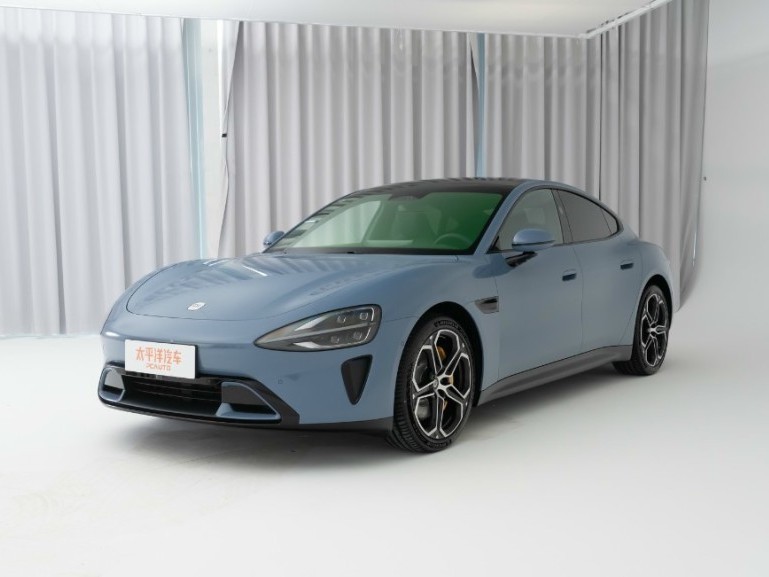
Xiaomi SU7 makes its debut! Accelerates to 100km in just 2.78s, with a maximum range of 830km!
JamesOct 17, 2024
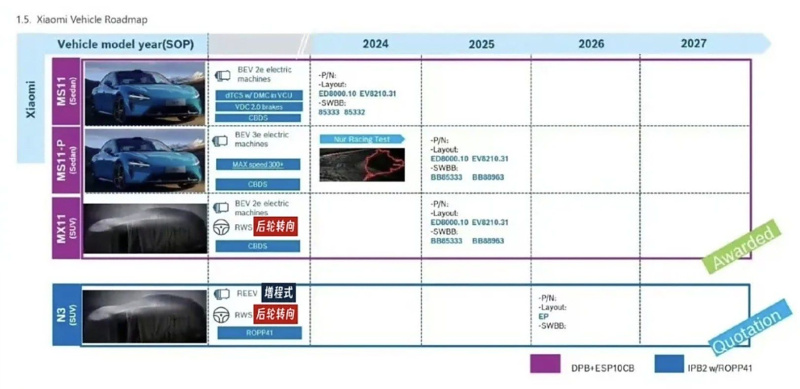
Xiaomi's brand new electric SUV is exposed, to be launched in 2025, the way the door opens is the highlight!
AshleySep 25, 2024
View More






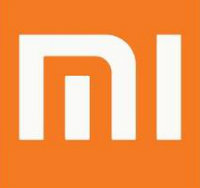





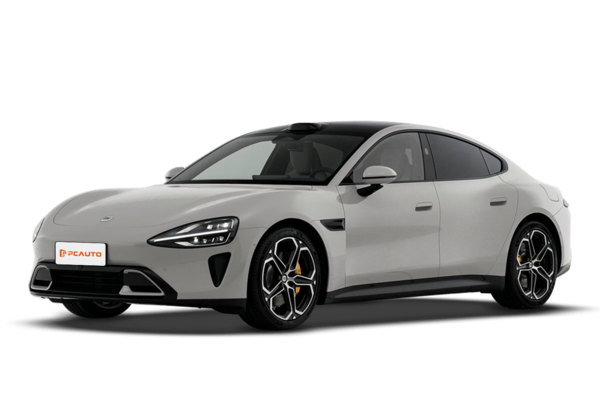
 Cars
Cars




Pros
Cons